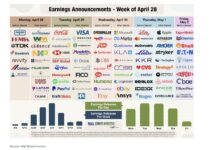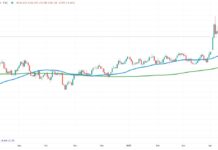One of the earliest recollections from my start in the industry was an investing strategy founded by Michael O’Higgins called the ‘Dogs of the Dow’. The simplicity of buying high yield blue-chip companies lured in numerous investors and became quite the phenomenon in the early 1990’s. The premise of this investing strategy involved buying the ten highest yielding stocks from the Dow Jones Industrial Average at the end of each year, holding them for the full calendar year, and then replacing them with the new ten highest dividend payers. About as simple as strategies come.
Everyone seems to have an investment process. Professionals stress their importance, but just like real life, things happen, situations change, and all of a sudden you’re thrown off your game. I write this shortly after Labor Day of 2016, as I re-examine my own investing strategy and outlook for the remainder of the year.
The primary reason?
I believe there has never been another time in history when investment disciplines have been more under attack for a longer duration. It is a very long list of seasoned investors who’ve lamented the difficulty in operating in what many deem an unnatural market environment, and I want to make certain I remain true to my investing strategy.
Investor discipline is being impaired by the Federal Reserve’s eight year campaign attempted to accomplish one thing – to get you to do things with money that you would not normally do. Because of that effort, I would argue that having a strategy, having the discipline to stick to it, and maintaining its execution has become more valuable than ever. The chief problem though is that it has also become exponentially more challenging.
If you follow a defined process, you will have times when absolutely nothing seems to work. Your charts don’t work. Your signals that previously worked so well it bordered on unfair, are suddenly sending you on a wild goose chase. It gets so bad, you start to speculate that your indicators are taking on human-like tendencies and are taunting you. Setups which were numerous, start to evaporate, and of course, you start searching for something new. Maybe it’s just a little tweak at first, but that morphs into a more dramatic change in approach, and a few months later you’re sporting an entirely new strategy and on the lookout for converts.
 I follow a number of traders on Twitter who are ‘all in’ using technical analysis including a number of CMT’s (Chartered Market Technicians). Considering that I’m a value manager, what interest would I have? My self-serving reason? A number of these chart followers and quantitative types are some of most disciplined investors I know, and I am hoping their strict adherence to their process will indirectly help me stay true to what I do.
I follow a number of traders on Twitter who are ‘all in’ using technical analysis including a number of CMT’s (Chartered Market Technicians). Considering that I’m a value manager, what interest would I have? My self-serving reason? A number of these chart followers and quantitative types are some of most disciplined investors I know, and I am hoping their strict adherence to their process will indirectly help me stay true to what I do.
Are you a technician? Stay true to your discipline and don’t start bottom-fishing momentum stocks that’ve fallen out of favor just because you’re experiencing a dearth of setups. There are going to be times that what you’re doing doesn’t make any sense. That’s investing. Go back and research what did work. Why it worked. Why you stuck to your strategy when positives were just as irrational as the negatives are now. No one questions why the coin comes up heads ten times in a row when you’re calling heads. Maybe take a break and walk away from things for a while, but before you make a dramatic shift in strategy, ask yourself this, what are you going to do when that new and improved method falters, because eventually, it will.
I recently saw an online investment authority warn momentum traders that given earnings misses and the size of subsequent stock selloffs, that ‘the game’ had changed. And furthermore, that investors need to adjust accordingly if they are going to ‘make it’ in today’s new landscape. I’m pretty certain they said the same exact thing the first year the ‘Dogs of the Dow’ didn’t work out.
Thanks for reading.
Twitter: @HeartCapital
Any opinions expressed herein are solely those of the author and do not in any way represent the view or opinions of any other person or entity.







